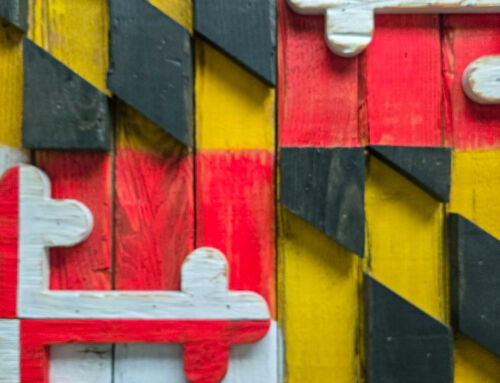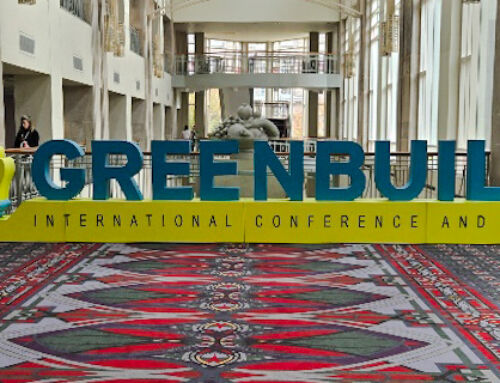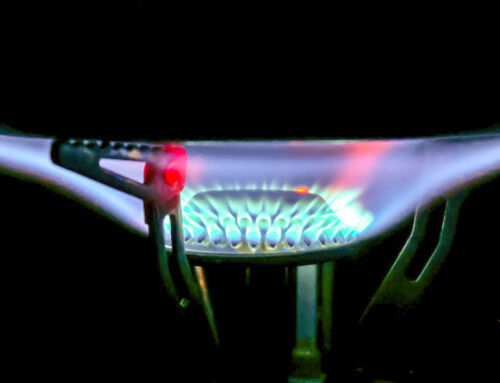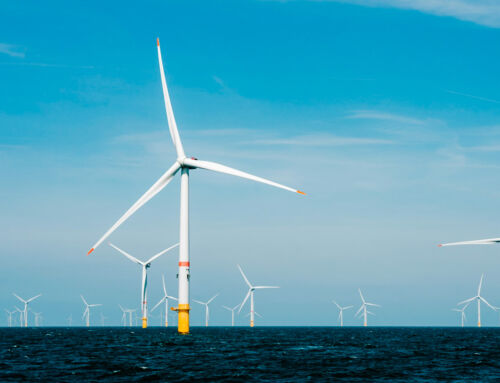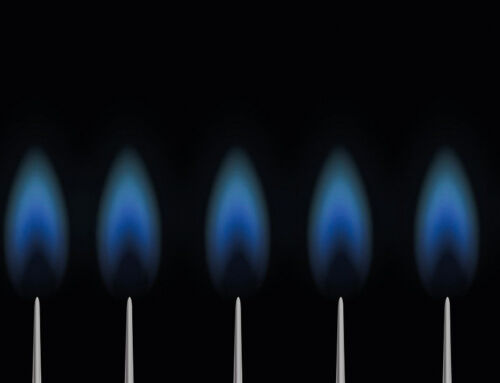View by Topic
Recent Articles
-
The Government in Maryland is Coming for Your Fossil Fuel Appliances, AgainSaturday, November 23rd, 2024
-
29 Billion Square Feet of LEED Certified Space and CountingSaturday, November 16th, 2024
-
Voters Save Gas Stoves from Government Ban Portending More ..Saturday, November 9th, 2024
-
Ocean City and Others File Lawsuit to Reverse Offshore Wind ApprovalThursday, October 31st, 2024
-
Lawsuit Challenges D.C. Gas Appliance Ban and Net Zero Building CodeSaturday, October 26th, 2024
View by Month/Year
“Green Building Law Update” Headlines
Recent Articles & News from
Stuart Kaplow’s blog
at GreenBuildingLawUpdate.com
- Transforming the Built Environment: LEED Green Building Hits 29 Billion Square Feet November 17, 2024
- Gas Stoves Saved: Washington Voters Reject All Electric Building Mandates November 10, 2024
- Maryland Offshore Wind Project Faces Legal Storm from Coastal Communities November 3, 2024
- Legal Showdown in DC: Lawsuit Challenges Gas Appliance Ban as Preempted October 27, 2024
Subscribe to the Green Building Law Update!
Stuart Kaplow brings his expertise and extensive experience to the table with his unique digital publication, "Green Building Law Update". Subscribers receive regular updates to keep them informed about important issues surrounding Environmental Law, Green Building & Real Estate Law, as well as the emerging demand for Environmental Social Governance (ESG).
Get fresh content through the lense of Stuart Kaplow's cutting-edge expertise, innovative commentary and insider perspective. Don't miss another issue! Subscribe below.
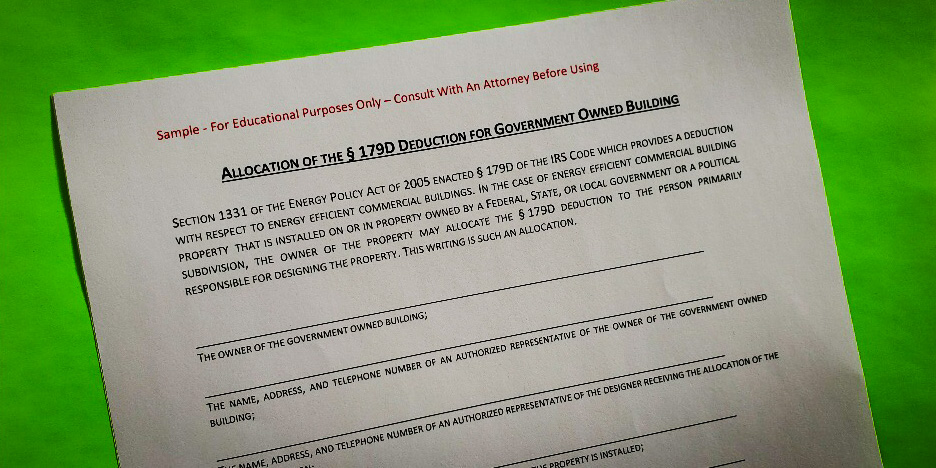
179D Tax Deduction Allocated from Government Buildings
On December 20, 2019, the President signed legislation reviving the Section 179D energy efficient commercial building tax deduction and while much has been written about the much needed boost to green building, little has been said about the enormous benefits available from government owned buildings.
The § 179D federal tax deduction was brought back from the dead. This was Congress’ tax extenders bill bringing back to life expired tax provisions. This post will not consider the extended tax breaks for racehorses and auto racetracks nor the reduction in taxes for domestic beer and spirts, and not the § 179D deduction for privately owned buildings, but rather it will focus on the energy efficient commercial building deduction for government owned buildings.
Unremarkable, the Tax Extender and Disaster Relief Act of 2019 amended the Internal Revenue Code of 1986, ..
SEC. 131. ENERGY EFFICIENT COMMERCIAL BUILDINGS DEDUCTION.
IN GENERAL. – Section 179D(h) is amended by striking ‘‘December 31, 2017’’ and inserting ‘‘December 31, 2020’’.
EFFECTIVE DATES. – The amendment made by subsection (a) shall apply to property placed in service after December 31, 2017.
But the import of those few interlineated words, is in the instance of energy efficient commercial building or property that is installed on or in property owned by a Federal, State, or local government or a political subdivision where the owner of the property may allocate the § 179D deduction to the person primarily responsible for designing the property (the designer). Of course, the government does not pay federal income tax such that it cannot utilize a tax deduction , so that tax deduction may be allocated to a taxpayer.
The deduction will be allowed to the designer for the taxable year that includes the date on which the property is placed in service. The § 179D deduction had been in effect since January 1, 2006, but the systems and buildings must have been placed in service by December 31, 2017, which is when § 179D expired, prior to this revival. And it should not be lost on anyone that this tax deduction was revived back to December 31, 2017 (.. when it last expired) and will remain effective through December 31, 2020.
The IRS has issued guidance, that a designer is a person that creates the technical specifications for installation of energy efficient commercial building property (or partially qualifying commercial building property for which a deduction is allowed under § 179D). A designer may include, for example, an architect, engineer, contractor, environmental consultant or energy services provider who creates the technical specifications for a new building or an addition to an existing building that incorporates energy efficient commercial building property.
A person that merely installs, repairs, or maintains the property is not a designer.
If more than one designer is responsible for creating the technical specifications, the government owner of the building may determine which designer is primarily responsible and allocate the full deduction to that designer, or at the owner’s discretion, allocate the deduction among several designers.
An allocation of the § 179D deduction to the designer of a government owned building must be in writing and will be treated as satisfying the requirements of tax code with respect to energy efficient commercial building property (or partially qualifying commercial building property for which a deduction is allowed under § 179D) if the allocation meets the simple and straightforward requirement of the IRS guidance and contains:
(1) The name, address, and telephone number of an authorized representative of the owner of the government owned building; (2) The name, address, and telephone number of an authorized representative of the designer receiving the allocation of the § 179D deduction; (3) The address of the government owned building on or in which the property is installed; (4) The cost of the property; (5) The date the property is placed in service; (6) The amount of the § 179D deduction allocated to the designer; (7) The signatures of the authorized representatives of both the owner of the government owned building and the designer or the designer’s authorized representative; and (8) A declaration, applicable to the allocation and any accompanying documents, signed by the authorized representative of the owner of the government building and designer.
In most instances that allocation form is no longer than one page.
A tax deduction of $1.80 per square foot (i.e., this tax incentive is based on the area of the building not the dollar amount expended) is available to owners of new or existing buildings who install (1) interior lighting; (2) building envelope, or (3) heating, cooling, ventilation, or hot water systems that reduce the building’s total energy and power cost by 50% or more in comparison to a building meeting minimum requirements set by ASHRAE Standard 90.1-2007 for buildings and systems placed in service after January 1, 2017 (before that date ASHRAE 90.1-2001 was used).
Note the maximum amount of the § 179D deduction to be allocated to the designer is the amount of the costs incurred by the owner of the government owned building to place the energy efficient commercial building property in service. A partial deduction may be allocated.
Be aware the Department of Energy maintains a public list of software that may be used to calculate energy and power consumption and costs for purposes of the comparison against the prototype ASHRAE 90.1-2007 building. Selection of the ideal software for a particular building type can be key.
In 2020 when Big Pharma is “out” and Jagged Little Pill is “in” many if not most new buildings constructed this year in states where the adopted energy code is the 2015 IECC or later, will meet the required level of performance above the ASHRAE standard. And LEED as well as 4.0 projects will in the vast majority of instances qualify.
Deductions of $0.60 per square foot are available in instances in which individual lighting, building envelope, or heating and cooling systems that partially qualify by meeting certain target levels or through an interim lighting rule issued by the IRS.
Bringing back to life the dormant § 179D tax deduction will not bring about the zombie apocalypse (.. I’m fairly confident?) but it will revive the moribund U.S. green building industrial complex, including incentivizing energy efficient government building.
Moreover, given that buildings use more than 40% of energy in the U.S., this tax incentive can benefit not only the designer of a government owned building, but given the concomitant one-third of all greenhouse gas emissions coming from those buildings (more than any other sector in the economy), also repairing the world.
This law firm regularly works with owners, tenants, designers and others in securing green building incentives, including advantaging the § 179D tax deduction.





